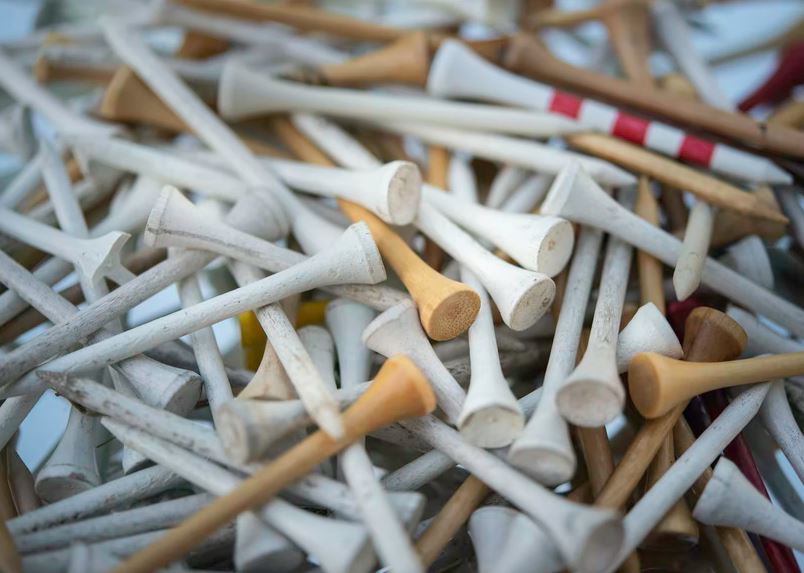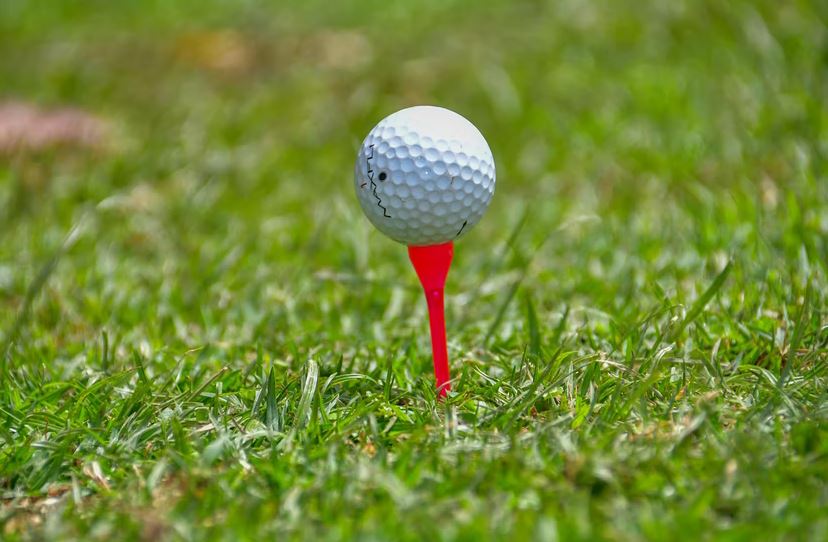Golf tees are probably the humblest equipment used in golf. It is among the supporting equipment in the sport yet is essential to most golfers. It is the implement that supports that golf ball, raising it above the ground when the ball is played from the teeing ground. On tee shots, golfers are not really required to use a tee, but a majority of golf players do.
At the present time, golf tees are pegs that are pushed into the ground. They are mostly made of wood, plastic, or rubber compounds. Usually, the top end of the tee is flared and concave in order to support the gold ball and keep it stationary. But there are also various designs when it comes to the top of the peg.
Tees are only used when playing the first stroke of a hole from the teeing ground. One exception is when there is a penalty that needs the golfer to go back to the teeing ground and repeat the stroke. If you are into playing golf, have you ever wondered when it was first used? Why do you think it was created? If you are also curious about these, we’re here to help you. In this post, let’s take a look at the beginnings of the lowly golf tee. Also, we give a reliable link for you to see the best online casino in australia.
The Earliest Tees
It was in the late 1800s when tools designed specifically for teeing a golf ball began to arrive on the scene. So, how do you think golfers used to tee up their golf balls before the creation and manufacture of the modern golf tees that we know today? Well, the earliest “tees” were just clumps of dirt. Golfers back in the ancient hazes of Scotland would use a club or their shoe to stab the ground and dig a little mount of turf on which to set the golf ball.
As golf became matured and more organized, sand tees were introduced and became the norm in the game of golf. But what is a sand tee? It is basically wet sand that is shaped into a conical mound. The golf ball is placed on top of it and used as a tee. These were still the norm into the early 1900s. Golfers have usually found a box of sand on each teeing ground. This was the origin of the term “tee box.” There are times when water is provided to golfers. They would wet their hands and get a handful of sand to shape into a tee. Sometimes, the sand in the “tee box” was already wet and easily shaped.
However, sand tees were messy. That is why by the late 1800s, implements for teeing the golf ball began showing up in patent offices. Before you continue reading, you can check out the link if you are interested to know the best usa online slots this year.
The First Golf Tee Patent
There were actually two people who filed the first patent application for a golf tee which were William Bloxsom and Arthur Douglas of Scotland. They received British patent number 12,941, which was issued in 1889 for “An Improved Golf Tee or Rest.” The tee they made had a flat, wedge-shaped base that was a couple of inches from end to end. It also has some prongs at the narrow end of the base where the golf ball is placed. The tee is sat on top of the ground and not pressed into it.
The first golf tee that was known to be pushed into the ground was referred to as the “Perfectum.” It was patented by Percy Ellis of England in 1892. It was basically a nail with a rubber ring added to the head. During this era, many other patents were issued for both types of golf tees. However, a lot of them were never marketed, and none caught on commercially.
The Golf Tee by George Franklin Grant
If you search the Internet for the inventor of the golf tee, there is one name that you will commonly see, which is Dr. George Franklin Grant. However, to make things clear, he was not the one who invented the golf tee, as there were many others who have filed for patents in the past years. What he did was patent a wooden peg that pierced the ground. This patent was the reason he was recognized in 1901 as the inventor of the wooden golf tee by the United States Golf Association. His invention has a patent number 638,920, which was given in 1899.
However, the role of Grant in the development of the golf tee was long forgotten. It’s because his wooden tee was not the usual shape of the golf tees that we see today. In addition, his tee was not concave. This means that the ball needs to be placed and balanced carefully on the top of the wooden peg. In addition, Grant also did not manufacture the tee and never marketed it. Therefore, it was not seen by many. Sand tees also continued as the norm on golf courses for the next two decades after the patent of Grant was issued.
The Introduction of the Reddy Tee
The modern form of the golf tee was introduced with the invention of Dr. William Lowell Sr., which he called the Reddy Tee. The design of this golf tee was patented in 1925. However, even before that patent was finalized, he made a deal with the Spalding Company for their manufacture.
The Reddy Tee was wooden but later on, switched to plastic. The first ones were green and later on changed to red, hence the name “Reddy Tee.” This golf tee pierced the ground and had a concave platform on its flared top that held the ball stably in place.
This golf tee was heavily marketed by Dr. Lowell, unlike his predecessor inventors. The best move was in 1922 when Walter Hagen was signed to use Reddy Tees during an exhibition tour. After that, the Reddy Tee became popular. Spalding began to mass-produce them while other companies copied them.
Since then, the basic golf tee has looked the same. It is either a wooden or plastic peg that is flared at one end to cradle the ball. At the present time, there are fancier golf tees available. Some use bristles, tines, or prongs to hold the ball. There are also some that come with depth indicators on the shaft of the peg to point to the ideal ball heights. Some also use angled rather than straight pegs. However, most of the golf tees in play still have the same form and function as the Reddy Tee.
Conclusion
Even though golf tees are just small and simple equipment used in the game of golf, it is amazing to learn that many people attempted to design and market them in the past. Today, there are lots of options when it comes to golf tees. We hope this post helped you learn more about the golf tee history.

